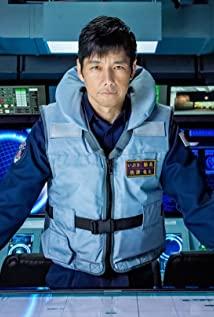Sometimes it is easy to recall this work together with "Forever Zero". The film appeared in the Japanese generation of famous machines. There are the Nakajima 3-type ship battle imitating the British Gloucester, the European-wing No. 1 prototype of the 96-ship battle, and the 96-land attack designer Honjo Jirou who likes to complain. The 96 Land Attack is the best twin-engine long-range bomber in its era, much better than the American Martin B10 and the British Lembheim in the same period. Only the Soviet DB10 has similar performance. In 1937, 96 ships could be selected for the competition list of the world's first single-engine fighter. Jigoshi Jiro personally said that his most proud work is the 96 ship battle, not the Zero fighter. The biggest problem with the Zero, which was commissioned in 1941, was the selection of a small-diameter and low-thrust Rising engine. This choice directly locked the space for later improvement. It would have been better if the 1500-horsepower Venus engine put into production at the end of the period was directly used. In order to meet the military's requirement of 6 hours of cruising in the air, Jiro Kuetsu reduced the cruising speed to 200+/hour, which is close to the stall, resulting in a significant reduction in the actual range and standard load of the Zero. The level of Japan's aviation industry is completely accomplished by technology transfer. In the cartoon "The Wind Rises", the Japanese delegation going abroad to buy aviation technology in Europe is to visit and negotiate with the German Henkel company. Then, in the background of the times when people all over the country tighten their belts and work hard to fight for the day and night bomber system. This was an open secret in the 1930s. So much so that when Americans first saw the Zero, they insisted that it was made by the Germans. In World War II, China, Germany and Japan secretly completed the last technology transfer by relying on submarines. The results were the Jebi-type (three-type) of Japan's Kawasaki Heavy Industries and the imitation of the German liquid-cooled engine. Through the research and development of German products, Japan has initially figured out the method of industrialized production of fighter jets. The prototype of the three-type is the German HE100 (the apprentice in Japan is the Jebi, and the relative in the Soviet Union is the Lagg-3, both of which performed very well in the war). Through the localized improvement of this fighter aircraft that Japan lost to the M109 in the German bidding, the German production technology it absorbed has made the technological characteristics of Japanese manufacturing basically reach the world's advanced level in the late 1930s, and the speed of industrial production. Substantial increase, the cost of military equipment dropped significantly. This film appears to be a generation of famous machines. Including Japan's imitation of the British Gloucester's Nakajima 3 battle, Japan's original 96 battle of the European wing type 1 prototype, and the 96 land attack with its likes to complain about the designer Jilang Honjo. 96 The Land Attack is the best twin-engine long-range bomber of its time, much better than the American Martin B10 and the British Lembheim in the same period. Only the Soviet DB10 has similar performance. In 1937, the 96-ship battle could completely be shortlisted for the competition for the world's first single-engine fighter. Jiro Kugoshi personally said that his most proud work was the 96-ship battle, not the Zero fighter. The biggest problem with the Type Zero, which was commissioned in 1941, was the choice of a small-diameter and low-thrust Rising engine, which directly blocked the room for improvement of the Type Zero. From the production effect at the end of the war, the Type Zero used a 1500-horsepower Venus at the beginning of its service. The engine is doable. The result of using Rising is that in order to achieve the 6-hour cruising stay in the air required by the military, Jiro Kugoshi had to reduce the cruising speed to 200+/hour, which is close to the stall, resulting in the Zero's real range and load far worse than the paper data. The keynote of this film is to realize dreams and realize self-worth, that is, realize the self-worth and dreams of engineers. This film is not an anti-war film. People will not betray history. In Japan's historical narrative, war is the way for them to achieve national rise.
View more about The Wind Rises reviews











